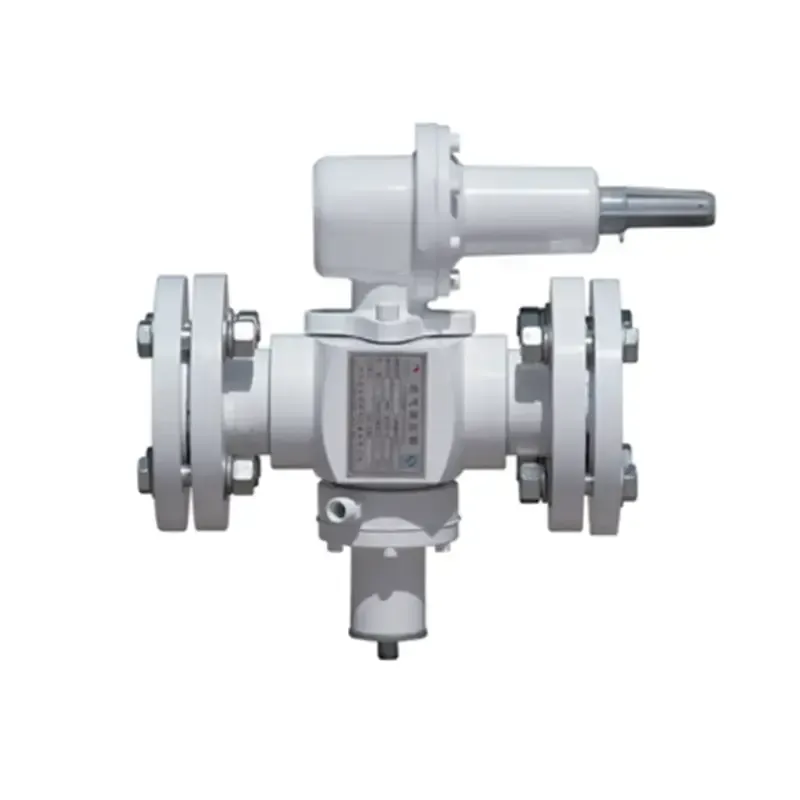
Dec . 05, 2024 12:06
Back to list
Understanding the Functionality and Applications of Pneumatic Valves in Industrial Systems
Understanding Pneumatic Valves A Key Component in Automation
Pneumatic valves play a crucial role in various industrial applications, serving as essential components in the automation systems that drive efficiency in manufacturing processes. These valves control the flow and pressure of compressed air or gas within a pneumatic system, which is fundamental for the operation of various machinery and equipment.
What is a Pneumatic Valve?
In simple terms, a pneumatic valve is a device designed to control the movement of compressed air or gas in a system. By opening or closing the passageways through which air flows, these valves enable operators to manage the operation of pneumatic actuators, cylinders, and other equipment. Pneumatic valves can be classified into several types, including directional control valves, pressure control valves, flow control valves, and solenoid valves, each serving specific functions in a pneumatic setup.
Types of Pneumatic Valves
1. Directional Control Valves These are perhaps the most common type of pneumatic valves. They direct the airflow in various paths according to the needs of the system. Typical configurations include 2-way, 3-way, and 4-way valves. For instance, a 3-way valve can control a single-acting cylinder, allowing airflow in and out to retract and extend the actuator.
2. Pressure Control Valves These valves regulate the pressure of air within the system. They are vital for maintaining safe operating conditions and preventing damage to machinery. Pressure relief valves and pressure reducing valves are common examples that ensure consistent performance.
3. Flow Control Valves Flow control valves manage the speed of the actuators by regulating the flow rate of the air. This is particularly important in applications that require precise movement, such as robotic arms or linear actuators. By adjusting the flow rate, operators can achieve the desired speed and responsiveness of the system.
4. Solenoid Valves Solenoid valves use an electromagnetic coil to operate the valve. When electricity flows through the coil, it creates a magnetic field that moves a plunger, opening or closing the valve. This type of valve is highly efficient for automation purposes and is widely used in modern pneumatic systems.
pneumatic valve

Applications of Pneumatic Valves
Pneumatic valves are found in countless applications across various industries. They are integral to manufacturing and assembly lines, where they help automate processes such as pick-and-place operations. In the automotive industry, pneumatic valves control actuators that assist in manufacturing components, ensuring precision and speed.
In packaging, pneumatic valves are used to manage the filling and sealing processes of products. They also play a vital role in the food and beverage industry, where hygienic pneumatic systems maintain safety standards and minimize contamination risks.
Advantages of Pneumatic Systems
Pneumatic valves offer several advantages, making them a favored choice in industrial applications. They are relatively simple to operate and maintain, and the systems are often more economical than their hydraulic counterparts. Additionally, pneumatic systems are cleaner, as they use air as a medium, minimizing the risk of oil spills and other pollutants.
Furthermore, pneumatic valves can work in dangerous environments, such as those with explosive materials, where electric components might pose a risk. The reliability and robustness of pneumatic valves make them ideal for various conditions.
Conclusion
Pneumatic valves are vital components in the landscape of industrial automation. With their ability to control airflow, regulate pressure, and manage speed, they enhance productivity and efficiency across multiple sectors. Understanding the different types of pneumatic valves and their applications can help businesses optimize their operations, ensuring that automation systems run smoothly and effectively. As industries continue to evolve and embrace automation, the importance of pneumatic valves will only increase, solidifying their position as indispensable tools in modern manufacturing.
Latest news
-
Safety Valve Spring-Loaded Design Overpressure ProtectionNewsJul.25,2025
-
Precision Voltage Regulator AC5 Accuracy Grade PerformanceNewsJul.25,2025
-
Natural Gas Pressure Regulating Skid Industrial Pipeline ApplicationsNewsJul.25,2025
-
Natural Gas Filter Stainless Steel Mesh Element DesignNewsJul.25,2025
-
Gas Pressure Regulator Valve Direct-Acting Spring-Loaded DesignNewsJul.25,2025
-
Decompression Equipment Multi-Stage Heat Exchange System DesignNewsJul.25,2025

